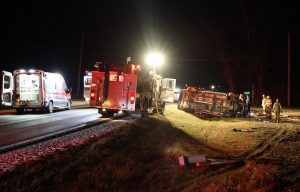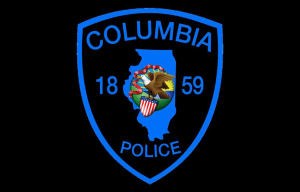COVID data leads to questions
The Illinois Department of Public Health does not know where many people contracted the novel coronavirus in the metro east region, according to data obtained by the Republic-Times.
The Republic-Times submitted a Freedom of Information Act request to the IDPH last month in an effort to acquire contact tracing data for the region that only shows how many cases have been traced back to certain locations in each county.
The IDPH complied with that request Friday, providing contact tracing information up to Sept. 21.
The statistics show the IDPH traced cases of the virus in Bond, Clinton, Madison, Monroe, Randolph, St. Clair and Washington counties to 18,279 potential exposure locations or places people with COVID-19 attend or reside.
The most common location cases were traced back to – with it entered 13,823 times – was listed as “unknown.” That is almost 76 percent of the total locations the virus was traced to.
In Monroe County, contact tracers listed unknown as a potential exposure location 741 times, which is about 86 percent of the total places they traced the virus to.
“When gathering information, cases may not remember every place they went or they may not convey all of their locations to the contact tracers,” IDPH public information officer Melaney Arnold said. “Many individuals report going to more than one location, so the more individuals are out and about, in addition to not socially distancing, wearing a mask or avoiding larger gatherings and events, the higher the risk of contracting COVID-19.”
It is critical to note that cases may be listed as stemming from multiple places, which is why there are more potential exposure locations counted than there are cases.
As of Sept. 25, which was the latest regional data still available on the IDPH’s website when the Republic-Times checked, the metro east had seen 15,283 cases of the novel coronavirus.
“Cases can report being at more than one location; they are not mutually exclusive,” Arnold explained.
The fact the state cannot definitively pinpoint where many people contract the virus may immediately suggest two conclusions.
On the one hand, it may provoke concern because it makes judging what activities are safest that much more difficult since the IDPH does not know where so many cases originate.
On the other, it can call into question the state’s decision to target specific types of businesses like bars and restaurants with mitigation measures aimed to slow the spread of the virus.
That viewpoint is what Monroe County Health Department Administrator John Wagner emphasized.
“We should not be hitting the bars and closing them down when most of the time we don’t know where people are getting it,” Wagner said. “If there was one type of behavior that was really contributing to our numbers, I would be the first to come out and say ‘we need to stop doing this.’ But there isn’t any one type. It’s all over the board.”
Across the region, the IDPH traced 155 cases to bars and restaurants, which is around .84 percent of the total locations cases were traced to.
That number is not precise because Washington and Clinton counties only listed their cases as traced to those locations as fewer than five.
In Monroe County specifically, no COVID-19 cases had been traced to restaurants and bars as of Sept. 21.
With so many cases being traced to an unknown source, that does not conclusively mean no one contracted the novel coronavirus at a bar or restaurant. It merely indicates contact tracers could not say someone got it there for certain.
Wagner pointed out many times people with the virus have been to multiple locations in recent days, which often makes it extremely difficult to know precisely where they contracted it.
“These people don’t know where they got it, unless there was an outbreak,” he said. “If 20 people get it and they all say ‘I was at this bar this night or this restaurant this night,’ then we can pretty much say ‘OK, we’re pretty sure you got it there.’ But most of the time, no, we have no idea where these people are picking it up.”
In addition to “unknown,” the three most common potential exposed locations or places of attendance or residence entered in the IDPH data were “other” and “not applicable.”
Those locations were listed 1,143 and 858 times, respectively.
Contact traces listed “other” 39 times and “not applicable” fewer than five times in Monroe County.
Excluding those top three categories since they are not actual places, the five most common places individuals in the metro east have contracted COVID-19 are long-term/skilled care facilities, K-12 schools, workplaces other than an office, bars and restaurants and hospitals or clinics.
The IDPH listed 618, 499, 181, 155 and 110 cases as being traced to those places, respectively, in the metro east. That is roughly 3.3, 2.7, .99, .84 and .6 percent of the potential exposure locations listed in the data, respectively.
For Monroe County, the IDPH data showed five cases had been traced to long-term/skilled care facilities, fewer than five had come from schools and none had come from the other locations as of Sept. 21.
The most common places virus transmission was traced back to in Monroe County, besides “unknown,” “other” and “not applicable” were day care centers with 37 cases, assisted/supported living facilities with 30 cases, long-term/skilled care facilities with five cases, correction facilities or jails with five cases and inmates in those latter facilities with five cases.
All other locations had fewer than five or zero cases listed as being traced to them.






